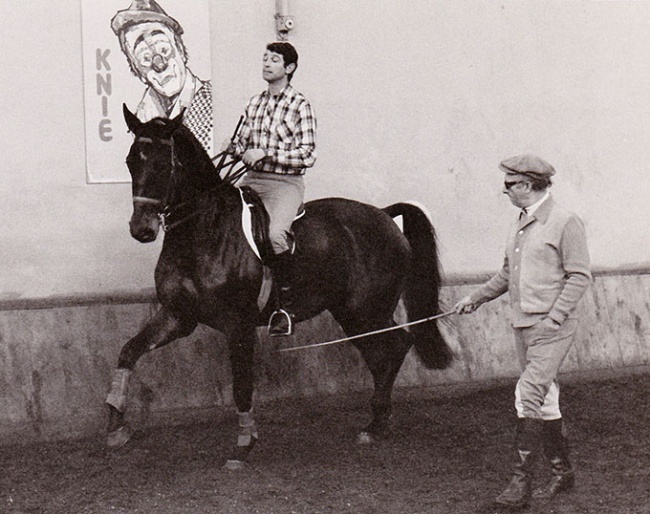
This article is a continuation of "Welcome to the Circus" - A New Series on Classical Dressage and the Circus with Part II - "Dressage Needs to be Visualised Love" and Part III - Georg Wahl: From the Spanish Riding School to the Circus
When An Olympic Cavalry Rider Trains At The Circus
The story of Olympian Ulrich Lehmann of the Swiss Cavalry School
Swiss cavalry dressage riders had already won 7 Olympic medals, two golden ones, after the Second World War when young Ulrich Lehmann attempted to ride in the hoof steps of his great predecessors to whom also 1964 Olympic champion Henri Chammartin belonged.
When his talented Swedish gelding Widin (by Obelisk) struggled with the piaffe, Lehmann remembered circus director Fredy Knie senior, who had been helping riders and horses at the Swiss cavalry School in Berne from the 1960s on. In preparation of the 1976 Olympic Games in Montréal Lehmann and Widin moved to the circus to solve the piaffe problem. This cooperation which would continue until the end of Lehmann’s career.
Lehmann’s boss at the Swiss Cavalry School (EMPFA) in Berne, former I-judge Pierre-Eric Jaquerod, was responsible for establishing the cooperation between the cavalry riders and Fredy Knie senior.
(UL = Ulrich Lehmann)
(P-E.J = Pierre-Eric Jaquerod)
Connecting with Knie
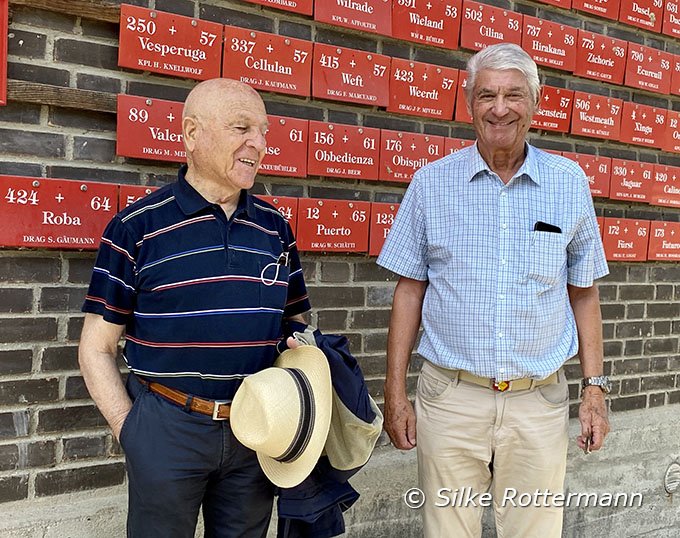
Wall of honor at the former Swiss Cavalry School, now
National Horse Center (NPZ) in September 2021
P-E.J: In the 1960s I was invited by Fredy Knie senior to attend a kind of special morning training. We were allowed to ride a few of his horses and Henri Chammartin also rode a giraffe. During the apéro that followed in the caravan, Fredy Knie senior told me to just come back to watch the training, if I was interested. With the permission of Colonel Mange, who was head of the EMPFA (Swiss Cavalry School) at that time, I returned to the circus every morning, looking forward to watch the training. Instead of observing passively I was, just like his son and his African workers, involved in the work with the horses on the longe, in liberty and under the saddle. I was delighted and fascinated.
Fredy Knie senior then asked me if it was possible that his horses could come daily for long quiet rides in walk to the green property of the EMPFA. There he got into conversation with Henri Chammartin and both came to terms that Fredy would help Chammartin’s group of riders with their training. That way Lehmann, Bär, Mäder and myself among others enjoyed the privilege to get his great help.
ED: What was your first contact with Fredy Knie senior, Mr. Lehmann?
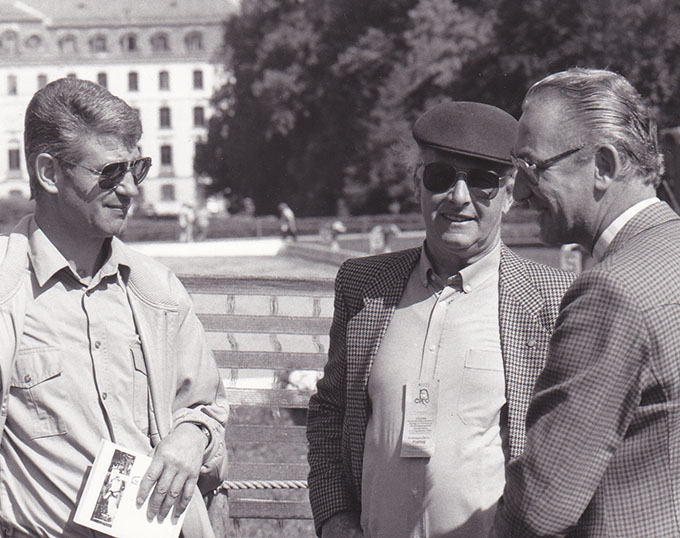
Donaueschingen
ED: Knie senior was really interested in dressage competition?
UL: Absolutely.
P-E.J.: The relationship between the EMPFA and Knie began in the 1960s. I started at the EMPFA in 1963. The administration was invited to watch the morning training now and then and so the contact was there.
Fixing the Piaffe
ED: When did you start cooperating closer with Fredy Knie senior, Mr. Lehmann?
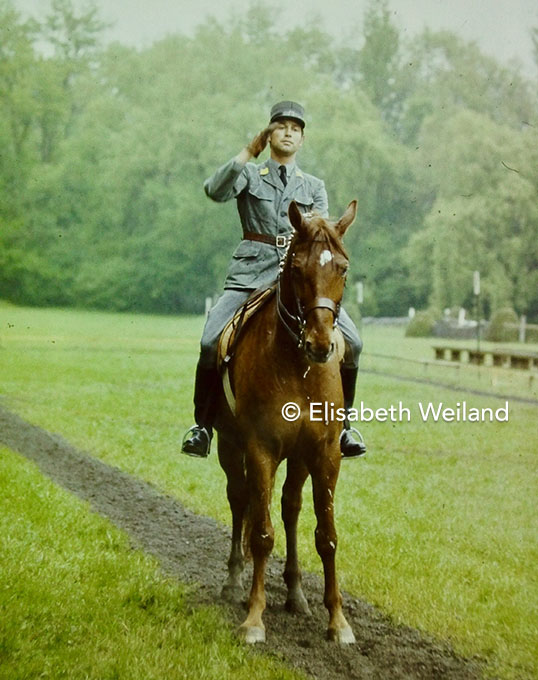
ED: Was the main focus in this preparation the Olympics in Montréal?
UL: We mainly worked on piaffe and passage. Until then Widin had a weak spot, he kicked himself on the coronet band behind. In 1975 I was on the Swiss team for the first time for the European Championships in Kiev and I asked Georg Wahl for advice. He assumed we would probably never get this issue solved, but I have to say that during my short stay at Knie in winter 1975/76 Knie was able to eliminate this fault.
ED: How did he do that?
UL: He simply touched at the right spot in the right moment. He truly was a luminary, especially for piaffe and passage.
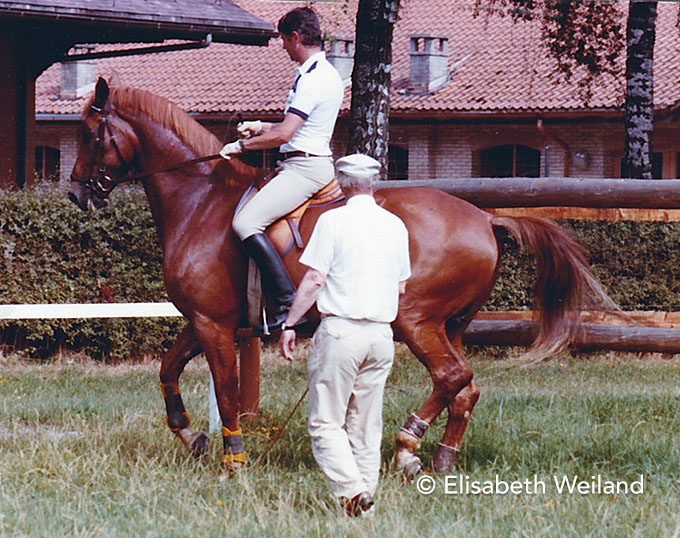
at EMPFA in 1983
UL: The in-hand work played a giant role. The two weeks at Knie in the winter of 75/76 were a very strict time. I lived in the zoo in Rapperswil and had to help in the morning with the rehearsal of new show acts. In the evening I was sitting with Knie in his caravan. Usually he fell asleep around 8 pm, but was wide awake again around 10 pm. And then he took these horse sculptures which show horses in movements from the SRS off the shelves and put them on the table. He showed me how to touch with them. It was highly interesting and went on night after night until 2 or 3 am. I was totally knackered at the end of my time at Knie.
A Continued Collaboration
ED: Was Widin also trained in the small circus manège during your time at Knie?
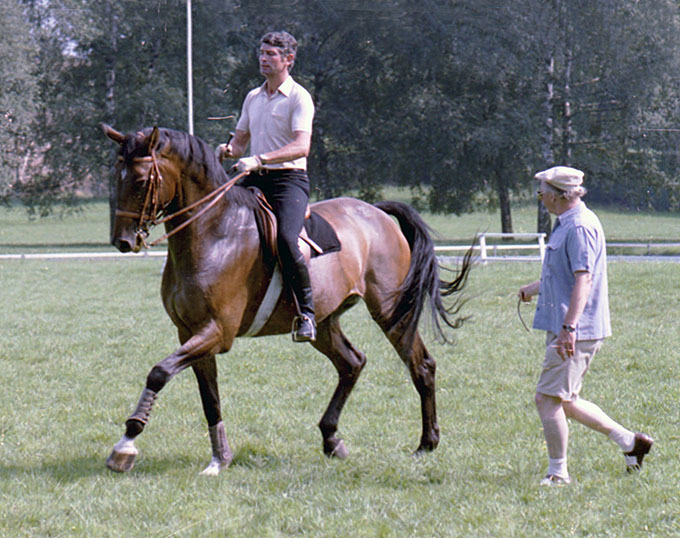
ED: Did you continue your cooperation with Fredy Knie senior after Montréal?
UL: Yes, until I finished my career in the 1990s. Whenever he was close, he passed by.
ED: In Switzerland there were some renowned dressage riders who also sought this cooperation…
P-E.J.: Knie himself never aimed to teach. You had to come to him and ask and he also needed to have a relationship to the rider to do it.
UL: When I became successful he was almost bombarded with requests. Otto Hofer, Silvia Iklé, Doris Ramseier and her son Daniel, and also Antonella Joannou when she was only a teenager.
ED: So Knie was requested as a specialist for piaffe and passage then?
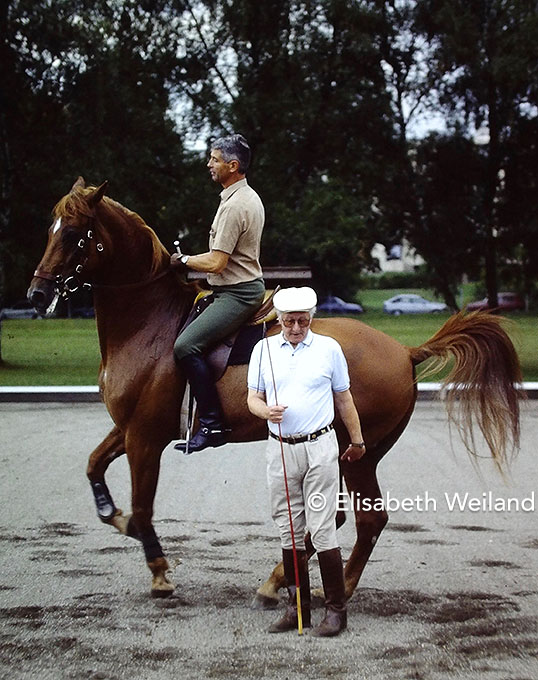
The Horse Has to Do it Voluntarily
ED: What was Knie’s credo in his work?
P-E.J.: The biggest credo was "The horse has to learn it, but it has to do it voluntarily." It is never allowed to be forced to do something. I would stake my life on it that he never hit horses. It had to be voluntarily at all costs. What impressed me in particular was that the horses did not learn something by heart, but always by paying attention to him. And treats also played an important role. I remember when we first worked with Fredy Knie senior at the EMPFA we did not have them and he truly called us out for it. From then on we always had the vitamins treats handy, in tons!
ED: So the horses were extremely fixated on him?
UL: Yes! There were people who claimed he hypnotized the horses. This is not true, of course, but he had an extremely good rapport with them.
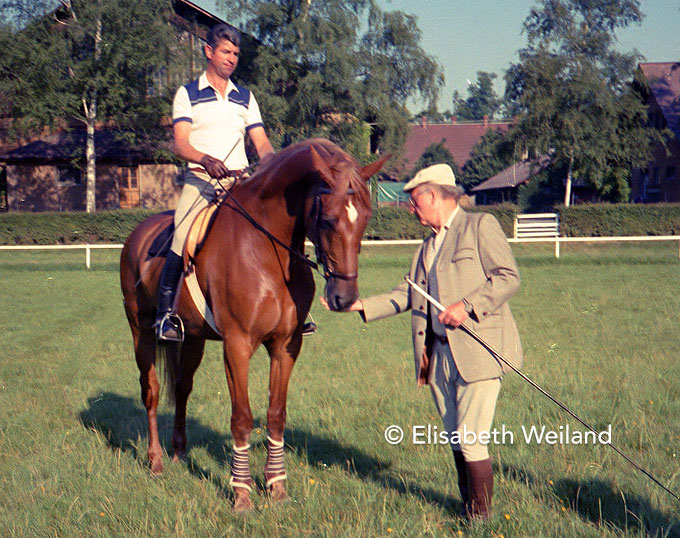
UL: It fits that Fredy Knie senior never took a sip of alcohol during the day. He always used to say: One sip of alcohol and one’s reactions are not the same anymore and this is impossible with horses.
ED: He revolutionized circus riding in a way?
P-E.J: Fredy Knie senior broke with the usual methods of the time which his father had still used. He trained horses with lots of love, calmness, and at the same time was very determined. He had one thing in common with the great old masters: The work always needs to be done in relaxation. Force was a no go.
by Silke Rottermann for Eurodressage
Photos © Silke Rottermann - Elisabeth Weiland - private archive Ulrich Lehmann
Related Links
"Welcome to the Circus" - Part I - A New Series on Classical Dressage and the Circus
Welcome to the Circus - Part II - "Dressage Needs to be Visualised Love"
Welcome to the Circus - Part III - Georg Wahl: From the Spanish Riding School to the Circus